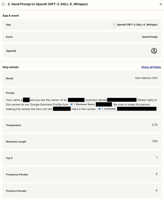Hello! After a long hiatus, I'm back to posting some WH1nsights. No promises on frequency of posts,...
How to Determine Key Business Metrics for Your Small Business
Step 1: Download this FREE resource to get a pulse on your business.
In this simple Google Sheet I put together, you can gain clarity on where your business is growing (or shrinking) to...
It will tell you: (1) your maximum number of customers/clients, (2) your maximum revenue, (3) the lifetime value of a customer/client, and (4) how much you can spend to acquire a customer/client and still achieve your return on investment targets.
This is just the tip of the iceberg. Once you get these four values, it will open the door for how to improve those metrics. This simple sheet will give you the ability to tweak the numbers and identify your targets for the next month, quarter, and year.
Complete the remaining steps below to obtain clarity within your business.
Step 2: Identify your customer/client count trends.
Use the 'people trend helper' sheet to get and idea of your average number of customers/clients. In addition, this sheet will help you identify your month over month change in people to better identify your churn rate. You will input your number of customers/clients on the 'Overview' tab in cell B2. Then, you will input the number of customers/clients you have leaving each month in cell B3. Be sure to put this in as a negative number!
Step 3: Identify your revenue trends.
Go to the 'revenue trend helper' sheet to better understand your revenue trends. The moving average is there to help smooth the data if you have a lot of noise month over month. Once you have identified a monthly revenue value, input the value into the 'Overview' sheet next to the 'Total Revenue per Month'.
Step 4: Determine your return on ad spend target.
Next to the 'Return on Ad Spent Target' cell on the 'Overview' sheet, input your target ROAS. Typically, this is any where from 3-6. If you have a return on ad spend of 4, this would mean a customer/client would spend $4 with you while the cost to acquire them would be $1.
Here is an example: Let's say you spend $100 to acquire a customer/client. That same customer/client would spend $400 with you over the designated time frame you decide. So, $400/$100 = 4. Hence, a 4:1 return on ad spend.
Step 5: Achieve business clarity and set your targets.
Now we are at the good stuff. This is where the fun occurs. Simply play around with the yellow cells to determine metrics like:
- Revenue per month per customer/client
- Your monthly churn rate
- Number of months your customers/clients stay with your business
- Maximum number of customers/clients you can achieve
- Maximum revenue per month you can achieve
- Acquisition spend per customer/client to achieve desired return on ad spend
This is just the beginning. I know there are a number of ways you can take these numbers and determine more business insights.
Let me know what I missed! Share a comment below or reach out to me via my contact information below.
Having trouble with or want to talk more about the calculator?
Advance Your Impact,
Ryan




